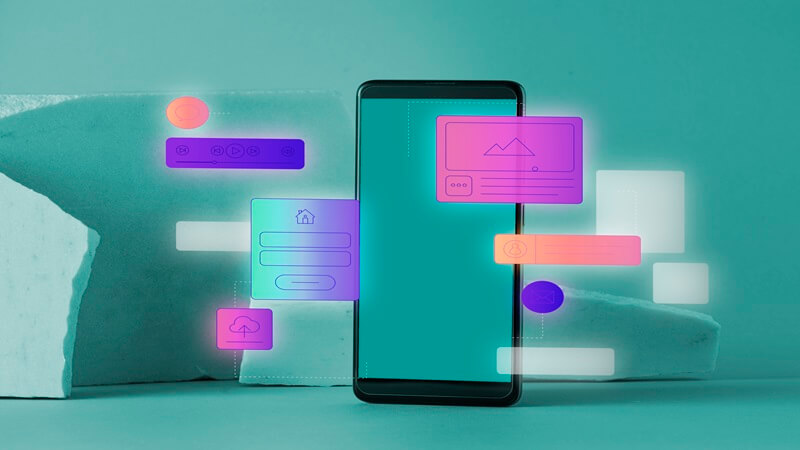If you’ve been hearing about modern “chat features” in your default Messages app, you’re already brushing up against the shift from legacy texting to richer conversations. This guide compares rcs vs sms message head-to-head—in plain language—so you can decide when the newer standard (RCS) truly helps and when the reliability of SMS is still the smarter pick.
Quick Definitions (So We’re Speaking the Same Language)
SMS (Short Message Service) is the classic text standard. It rides on the cellular signaling network, is nearly universal, and supports lightweight messages of roughly 160 characters (longer messages are split). MMS is the related standard for images and larger payloads, but it compresses media and can be inconsistent across carriers and devices.
RCS (Rich Communication Services) is the upgrade path for texting. It uses your data connection (Wi-Fi or mobile data) to deliver modern features: high-resolution photos and videos, read receipts, typing indicators, better group management, suggested replies, action buttons, and verified brand profiles. When RCS isn’t available, most apps fall back to SMS/MMS automatically.
Why This Comparison Matters Now
- Customer expectations have changed. People expect quick, visual, and interactive messaging without installing yet another app.
- Brands want trust and completion, not just delivery. Verification, buttons, and guided flows can reduce drop-off compared with plain blue links.
- Regulation and privacy are top of mind. The right channel for reminders and directions may not be the right channel for sensitive data exchange.
- Not everyone is on the same device or version. Cross-platform realities make fallbacks and hybrid plans essential.
The Everyday Experience: What Users Actually Notice
With SMS/MMS:
- Messages always “just send,” even with marginal data.
- Media often looks muddy and may fail on large files.
- No read receipts or typing indicators.
- Group threads can be clunky, especially on mixed devices.
- Links do the heavy lifting for actions (open browser, then figure out next steps).
With RCS:
- Crisp media—photos and videos look like they should.
- Read receipts and typing indicators reduce “Did you get this?” back-and-forth.
- Group controls feel like modern chat apps (name the group, add/remove people).
- Interactive prompts—suggested replies and action buttons streamline tasks.
- Verified brand profiles improve trust and reduce spoofing.
Reach and Reliability
SMS is the king of ubiquity. If a phone can connect to the cellular network, it can receive SMS. That’s why SMS remains indispensable for time-critical alerts (e.g., outage notifications) or populations with limited data.
RCS is increasingly common on modern Android devices and supported by many carriers/backbones. When both ends support RCS, you’ll see the rich experience. When they don’t, your app usually drops back to SMS/MMS so messages still deliver. In mixed groups or spotty data conditions, you may see this fallback behavior frequently—which is a feature, not a bug: delivery first, richness when possible.
Security and Privacy
- SMS/MMS: Content is not end-to-end encrypted. Treat it as visible to carriers and potentially vulnerable if intercepted.
- RCS (person-to-person): Many implementations support end-to-end encryption (E2EE) when both sides meet requirements and use compatible apps. You’ll usually see a visual indicator when E2EE is active.
- RCS (business messaging): Focuses on verified identity and secure transport; E2EE is generally not guaranteed. Don’t assume regulated-data compliance without additional controls.
Practical takeaway: Use RCS or SMS for non-sensitive messages and to link people into a secure, authenticated portal for anything private (payments, health records, account details). Keep read receipts and typing indicators configurable to respect user preferences.
Interactivity and UX
Where SMS keeps things minimal by design, RCS brings app-like conversations to the default texting experience:
- Suggested replies (e.g., “Yes,” “Reschedule,” “Directions”)
- Suggested actions (open map, add to calendar, track order)
- Rich cards and carousels with images, descriptions, and buttons
- Verified branding so recipients immediately recognize the sender
These elements reduce friction and nudge people toward the intended action with a single tap instead of a long link and a multi-step web flow.
Costs and Operational Considerations
- SMS/MMS: Typically billed per message segment (and per media message). Costs are predictable but can add up when you send many long or media-heavy messages.
- RCS: Pricing varies by provider and region. You may pay per session, per message, or per impression, often alongside platform/provider fees for business messaging. Richer flows can reduce total message volume by doing more in fewer steps.
Hidden costs to plan for: onboarding and brand verification, template approvals (where required), compliance reviews, analytics setup, and integration with internal systems (CRM, ticketing, scheduling).
Analytics and Measurement
SMS generally offers delivery and sometimes click-through when you shorten links. RCS can add message-level engagement signals (button taps, card swipes) and more granular funnel metrics. Better visibility helps you optimize flows based on outcomes (appointment confirmed, delivery rescheduled) rather than basic opens and clicks.
Compliance and Consent
Regardless of channel:
- Gain and document opt-in. Honor opt-out (e.g., “STOP”) promptly.
- Respect regional rules (e.g., TCPA, CAN-SPAM, GDPR).
- Avoid placing sensitive content directly in the thread; use deep links to authenticated portals for protected data.
- Maintain appropriate retention and audit policies in your CRM or messaging platform—not on recipients’ devices.
Healthcare, finance, public sector: RCS/SMS are excellent for appointment logistics, status, and directions. For PHI/PII or financial information, route users to a compliant environment and keep audit trails in your internal systems.
When SMS Still Wins
- Universal reach is non-negotiable. You have audiences on legacy devices or in low-data regions.
- Mission-critical alerts. You need the highest odds of delivery during outages or disasters.
- Simplicity over sizzle. A short text with a short link is all that’s needed.
When RCS Is the Better Fit
- You want guided, tap-first flows. Confirm/reschedule appointments, track orders, get directions, or start returns with buttons instead of typing.
- Brand trust matters. Verified profiles cut down on spoofing and second-guessing.
- Media quality is the message. Product shots, how-to clips, or proofs that need to look sharp.
- You’re optimizing for completion. Rich actions and analytics help you move people through a funnel efficiently.
A Hybrid Strategy (Usually the Best Answer)
Most teams succeed with SMS + RCS:
- Default to RCS where available to offer the best experience.
- Fall back to SMS/MMS for universal reach and continuity.
- Keep web experiences first-class. Every action button should gracefully open a mobile-optimized page if a rich action isn’t supported.
- Offer a human path. Provide “Talk to a person,” “Help,” or live-chat escalation from within any flow.
This approach future-proofs your messaging without leaving anyone behind.
Getting Started: Implementation Checklist
- Map your use cases. Start with high-utility scenarios (confirmations, status updates, directions).
- Choose a provider. Look for RCS/RBM support, strong SMS/MMS delivery, analytics, template tooling, and compliance features.
- Verify your brand profile. Name, logo, colors, and sender verification build trust.
- Design for taps, not typing. Replace free-form prompts with suggested replies and action buttons.
- Integrate your systems. Connect CRM, scheduling, support, inventory, or EHR—so conversations are contextual and auditable.
- Pilot one flow. Roll out to a small cohort, measure completion rates (not just clicks), and iterate.
- Plan for edge cases. What if someone has no data? What if a device can’t render a carousel? Always provide an SMS-friendly path.
- Document consent and retention. Bake opt-in/out and data policies into your playbook and automation.
Common Pitfalls (And How to Avoid Them)
- Assuming RCS = compliance. It improves identity and UX, not regulatory posture. Keep sensitive data in secure portals.
- Over-designing flows. Too many steps cause drop-off; keep actions obvious and minimal.
- Ignoring fallback UX. If an action depends on rich features, provide an SMS-safe path (a concise, mobile-friendly landing page).
- Forgetting internal teams. Train support and ops on what recipients see, so handoffs feel seamless.
- Measuring the wrong thing. Optimize for completed actions (appointments booked, orders changed), not just delivery or link clicks.
Real-World Scenarios
- Appointments & services. “Confirm,” “Reschedule,” and “Add to Calendar” buttons reduce no-shows and phone tag.
- Logistics. “Track order,” “Change delivery window,” and “Directions” eliminate multi-step web navigation.
- Support triage. Menu-first flows route simple issues to self-service and hand complicated ones to a human quickly.
- Reorders and renewals. Carousels and tap-to-reorder keep customers in the native Messages experience.
FAQs in One Place
Do my customers need a new app for RCS?
Usually no. Many Android phones ship with a Messages app that supports RCS once “Chat features” are enabled. Your system handles fallback automatically.
What about iPhone users or mixed groups?
Support continues to evolve. In mixed environments, threads may fall back to SMS/MMS to keep conversations going.
Is RCS always encrypted?
One-to-one RCS chats can be end-to-end encrypted in supported apps when all requirements are met. Business messaging typically emphasizes verified identity and secure transport, not E2EE.
Does RCS use my data?
Yes. It uses Wi-Fi or mobile data. If data isn’t available, your app generally reverts to SMS/MMS.
Can I just stick with SMS?
Absolutely—especially when you need guaranteed reach and your flows are simple. Many teams layer in RCS gradually, where it measurably improves completion.
Bottom Line
- Choose SMS when reach and reliability are non-negotiable and your use case is simple.
- Choose RCS when richer interactions, brand trust, and measurable completions matter.
- Choose both when you want the best of each: RCS for the guided experience; SMS for a universal safety net.
If you design with taps over typing, keep privacy by design, and measure real outcomes, you’ll get the upside of RCS without losing the reliability that made SMS a staple for decades.
Further reading: Explore the RCS ecosystem and specifications at the GSMA:
For more info visit Rcsdassk

